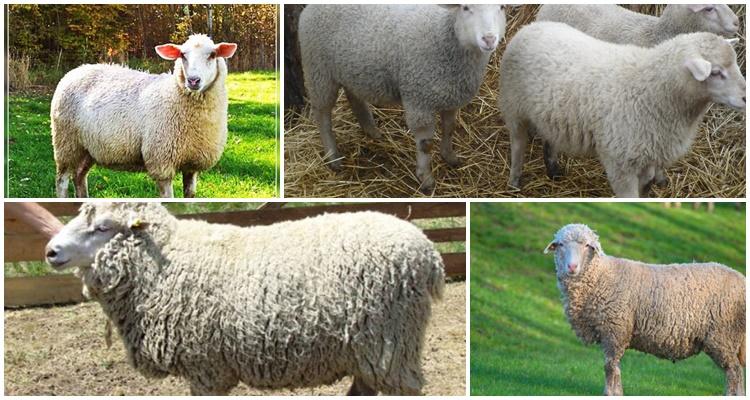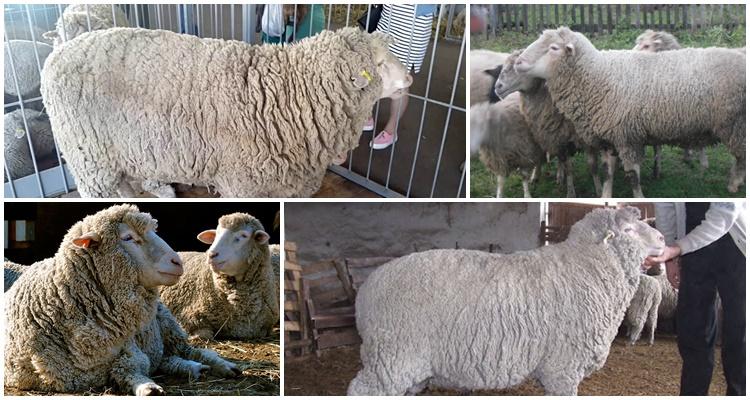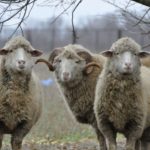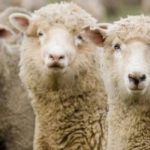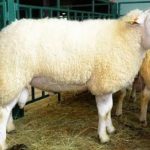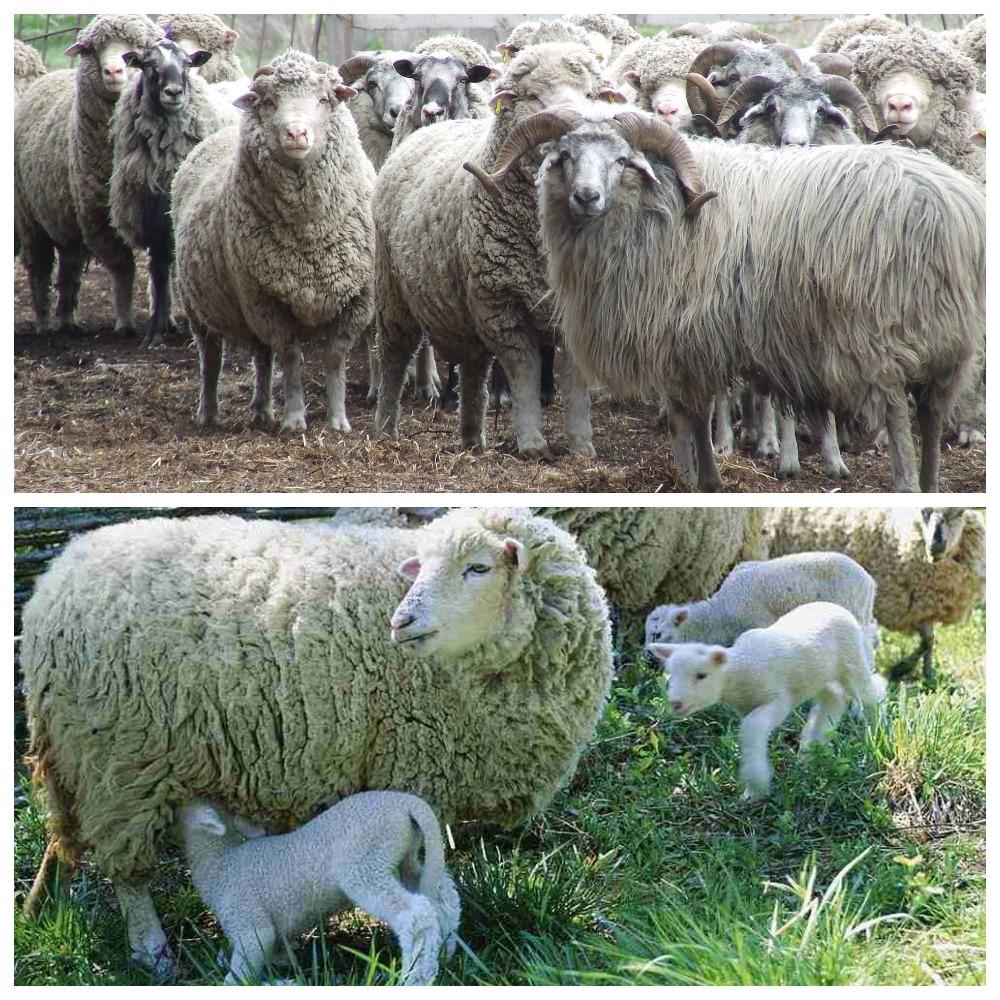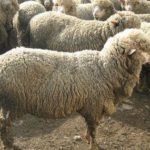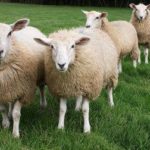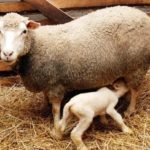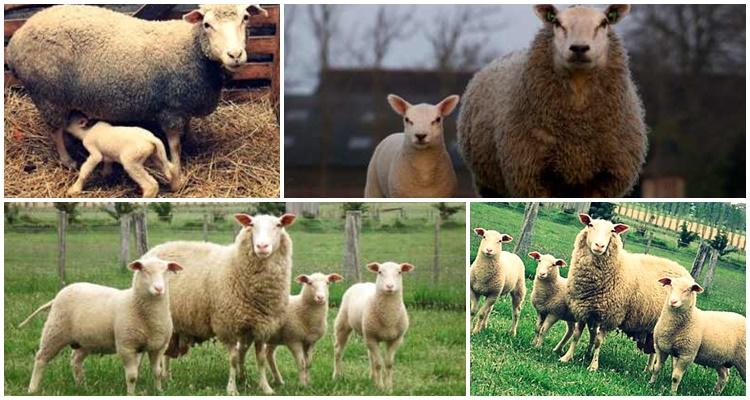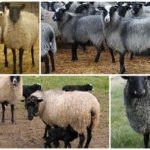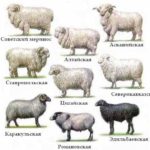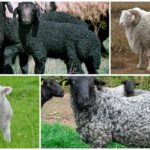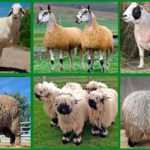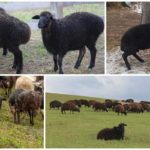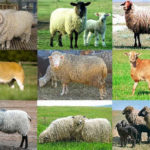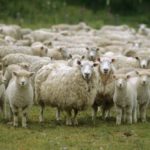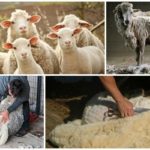The breed of sheep, when meeting the requirements for maintenance, care and diet, shows excellent productive qualities. The animals are of the meat-and-wool type and are distinguished by their high early maturity, resistance to disease, and unpretentiousness. Taken together, this makes sheep breeding profitable for both personal farming and commercial breeding.
History of the breed
The meat-and-wool breed was bred in the second half of the 19th century simultaneously in France and Germany.The French variety was called precos (translated from French as “early”), the German variety was called merinofleisch (“meat merino”). The genotype was formed by breeding French fine-fleece Ramboulier dams with English wool-meat studs of the Leicester breed and German Merinos.
Pedigree animals were brought to Russia from Germany in the 20s of the 20th century and after the Second World War. Steppe and forest-steppe zones with abundant pastures are suitable for breeding. In a hot, dry climate, with a lack of feed, animals lose productivity, their wool and meat quality decreases.
Character and exterior of prekos sheep
Prekos sheep do not move away from the herd and are sensitive to suspicious sounds and smells. The queens do not leave the lambs and protect them from dangers.
Distinctive features of Prekos breed sheep:
- big-headed;
- short necks;
- barrel-shaped bodies;
- tails are inconspicuous;
- strong, short legs;
- the wool is thick, 7-8 centimeters;
- light color (gray/white/milky/sand);
- 80% of rams are hornless.
The muzzle and legs are hairless, the tail is woolly.
Productivity indicators
The indicators of meat and wool breeds are determined by the amount of marketable lamb, the shearing of unwashed wool and the % of washed wool yield. The meat of 8-10 month old lambs has the best taste. With a monthly gain of 4-5 kilograms, they gain weight up to 40-50 kilograms. The maximum shearing per ram is 10 kilograms, per sheep – 5 kilograms.
Wool characteristics:
- staple fleece;
- output of washed wool – 50%;
- hair length – up to 8 centimeters;
- wool fineness – 60/58-64;
- cream fat, 30%;
- tortuosity is normal.
Staple fleece is a coat consisting of tufts of wool, identical in type, length and thickness of hair. The fleece of fine-wooled sheep has a staple structure.
Grease is a secretion of the sebaceous and sweat glands that protects the wool from matting, contamination, and mechanical damage. The maximum percentage of grease is found in fine-wool merino wool (40%). On average, 100 queens give birth to 140-150 lambs annually.
Advantages and disadvantages
Compared to fine-wool breeds, the wool on a sheep’s body grows unevenly and differs in composition. On the belly, the length and density of the fur is less. The lower back is covered with coarse and harsh hair.
Conditions and care
Sheepfolds for winter housing are built in regions where during the cold season the temperature drops below +5 degrees. The premises must be suitable for the number of animals, including ewes and lambs.Each sheep is entitled to 1.5 square meters, and the queen and offspring - 3 square meters.
The height of the sheepfold depends on the number of flocks. With a large population, machinery is used (for example, a tractor), so the height must be at least 3.5 meters. When care is carried out only by people - up to 2.5 meters. The walls can be with or without insulation, depending on average winter temperatures.
The width of the doorway or gate must have a capacity of at least 3 animals. Sheep do not tolerate drafts well, so the door is placed on the leeward side, taking into account the wind rose. There should be no gaps in the walls and roof.
The floor in the room must be hard, otherwise the sheep will have problems with ligaments. If the floor is concrete, it should be covered with wooden panels. The compacted earthen floor is covered with straw bedding, which is changed weekly.
The windows are located at a height of 1.5 meters from the floor level. The openings can be any size. The total number of windows should provide good illumination in the enclosed space during the day. In the evening, artificial lighting is provided.
Feeders are placed longitudinally. This can be one common feeder or individual ones. A sheep drinks up to 10 liters of water per day. Drinking bowls are placed along the wall. An automatic drinker is enough for 1 per 100 heads. Indoors it is necessary to have pens for dividing the herd into queens with lambs, inspecting animals, and shearing. In warm regions, with year-round grazing, it is enough to have a paddock with a rain shelter. Sheep are sheared in April-May and September-October.
Animal food
In the summer, the main food for sheep is forbs on the pasture and salt lick (10 grams per individual).In the evening, to improve digestion, give up to 2 kilograms of oats, raw cut fruits and vegetables. In the autumn-winter period, the sheep's diet consists of a mixture of hay and feed, succulent feed, and mineral supplements. Hay is the main food. It is prepared at the rate of 2 kilograms per day per animal. The hay should contain, in addition to forbs, clover and peas. Wheat bran, silage, and mixed feed provide 100-200 grams per head per day.
Juicy food (carrots, cabbage, pumpkin and beets) is given once a day during daytime feeding. To preserve high-quality fleece, mineral additives are mixed into the feed (per 1 animal):
- sodium sulfate – 3 grams;
- sodium hyposulfite – 4 grams;
- sulfur – 1 gram.
When fattening young animals to quickly gain weight, increase the share of concentrated, high-calorie feed. There must be constant access to fresh water, both in the pasture and in the sheepfold.
Breeding
Precos ewes enter sexual maturity at 6 months. But at this age, mating is skipped so that weak offspring do not appear. Subsequent reproduction can occur at any time of the year. The stud ram guards the herd and covers the sheep that come into heat.
From 100 queens they produce up to 150 lambs per year. Lambing usually occurs in early spring. The uterus with the newborn lamb is placed in a nursery until it gets a little stronger. No care is required for the lambs. The coat protects it from hypothermia, and the queen has enough milk to feed it. The sheep is a caring mother and does not abandon the lamb alone until six months. By one year, young animals gain 90% of the weight of adult animals. Young rams that enter into a fight with the producer are removed from the herd or slaughtered for meat.
Frequent illnesses
Sheep of the Precos breed are resistant to diseases that affect small livestock, such as:
- necrobacteriosis;
- pruritus;
- bradzot.
Animals may develop snot, which is a sign of worm infection.
Popularity of the breed in Russia
Fertility, strong immunity, good quality wool and meat, and adaptability to a temperate climate have made the Prekos breed in demand in the Black Earth region and southern Russia. Sheep of the Prekos breed are bred in the Voronezh, Kursk, Tambov, Belgorod regions, and Krasnodar Territory.

